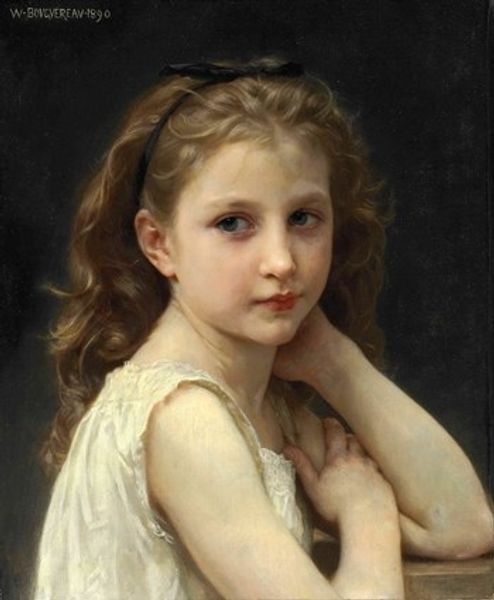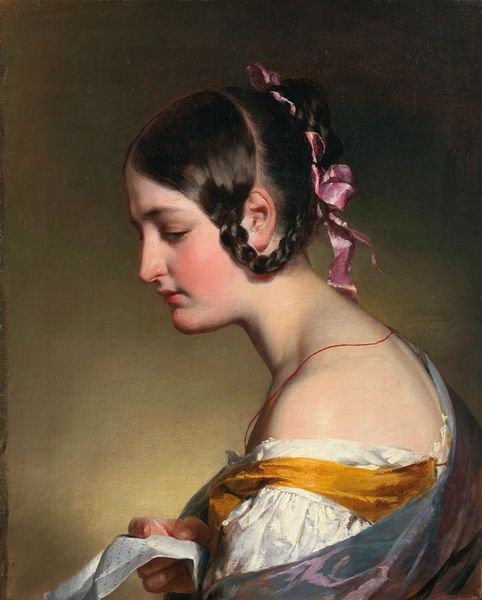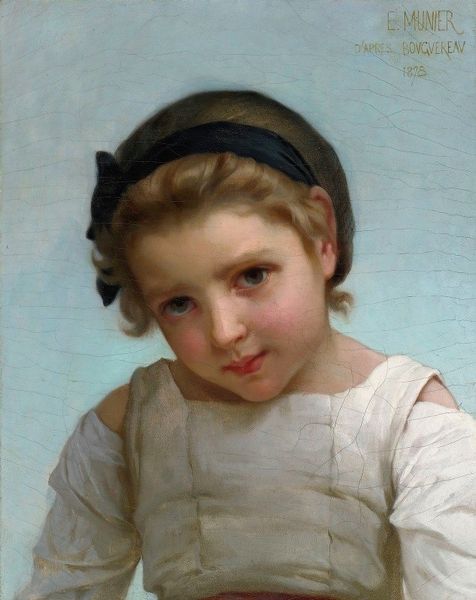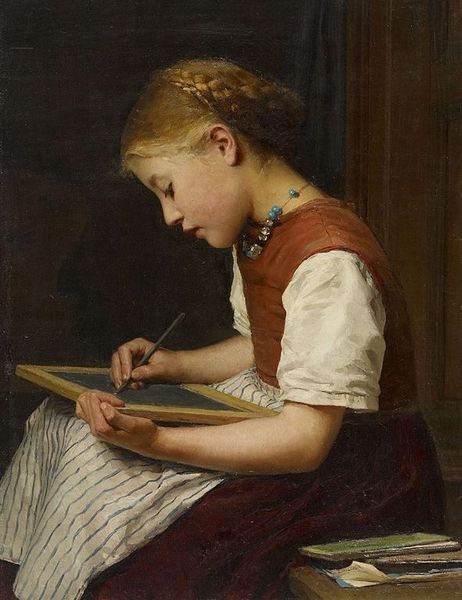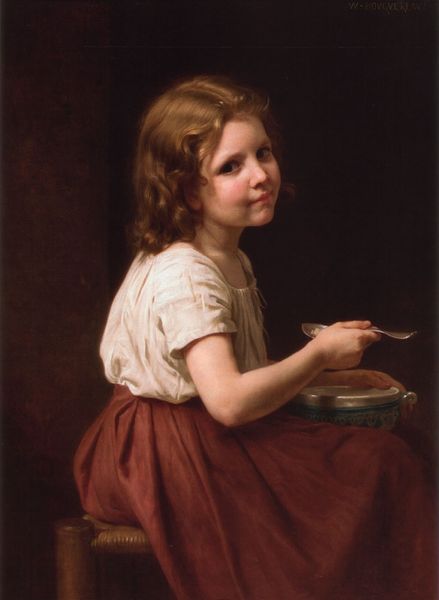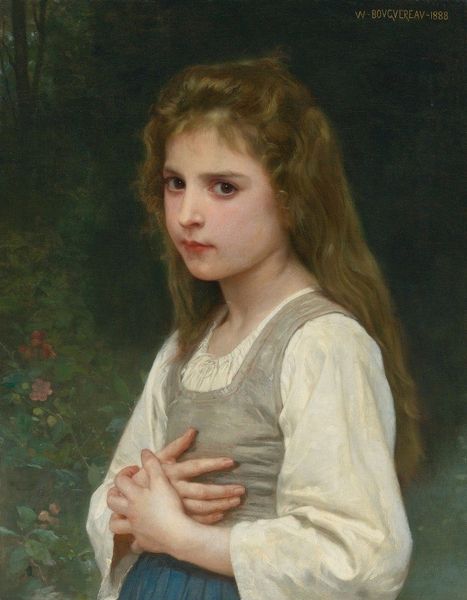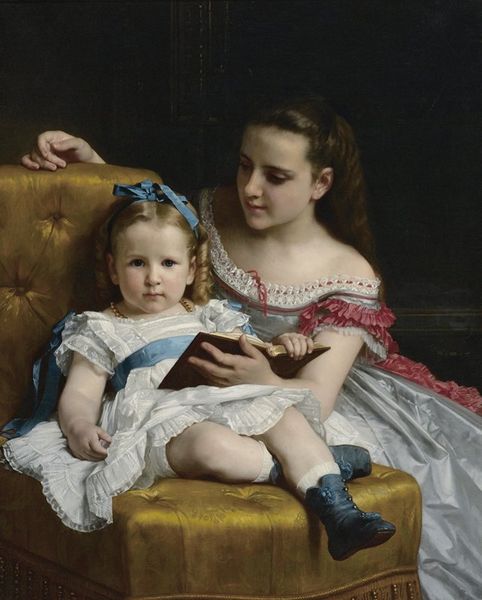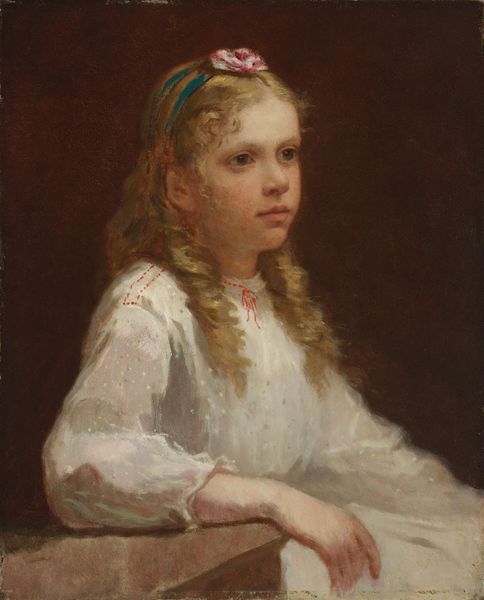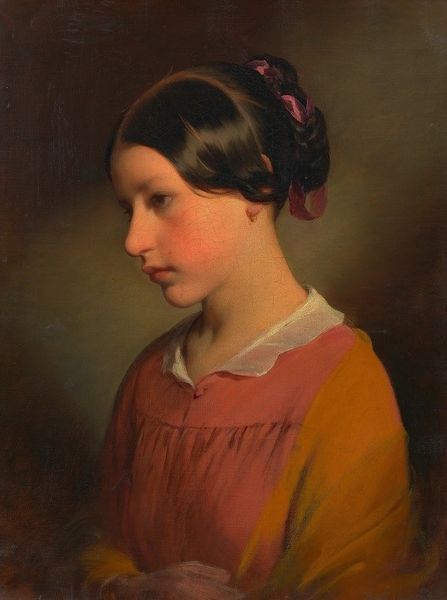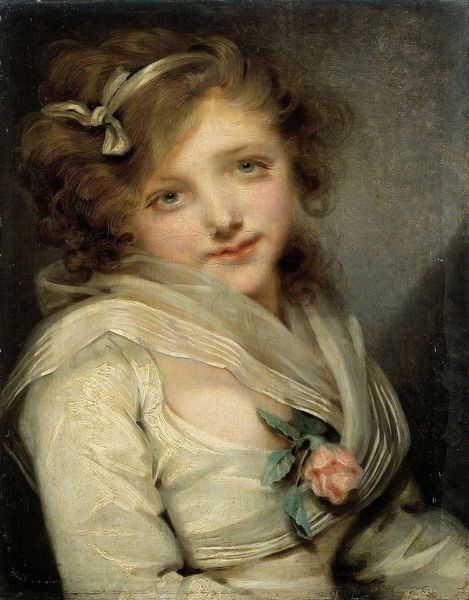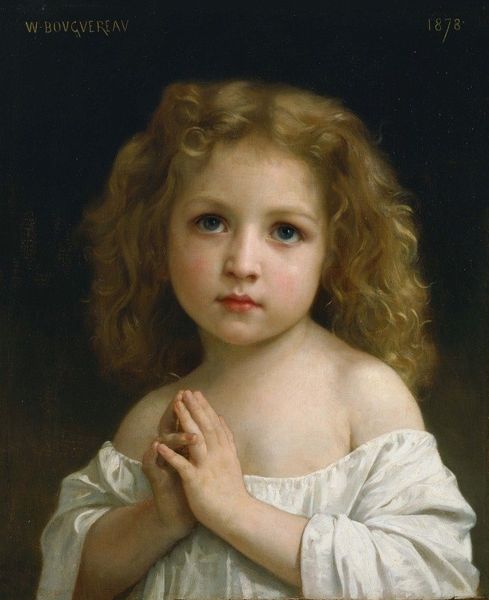
Copyright: Public Domain: Artvee
William Bouguereau painted “Distraction” in 1868 with oil on canvas. It depicts a young girl, perhaps from a wealthy family, caught in a moment of daydreaming. The image carries meaning through its visual codes and cultural references. The girl's clothing and the presence of sheet music suggest a certain level of affluence and education, common aspirations of the rising bourgeoisie in France at the time. Bouguereau was a product of the French academy, a powerful institution with a conservative aesthetic. His smooth, idealized style, while popular with the public, stood in contrast to the avant-garde movements of the day, like Impressionism, which challenged the academy's dominance. Art historians often consult salon reviews, letters between artists, and other period documents to better understand the cultural context in which these works were created. Analyzing this painting through a social and institutional lens allows us to see it not just as a portrait, but as a product of its time, reflecting specific social values and artistic debates.
Comments
No comments
Be the first to comment and join the conversation on the ultimate creative platform.

